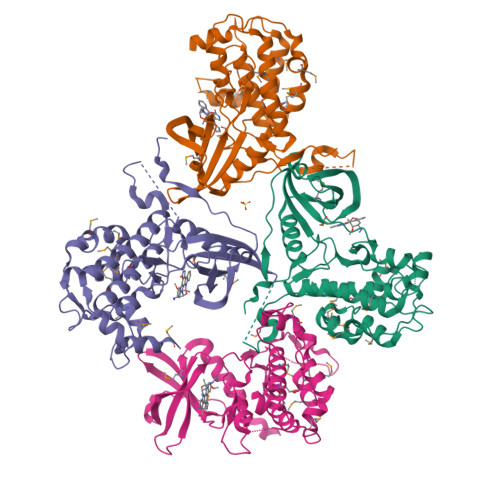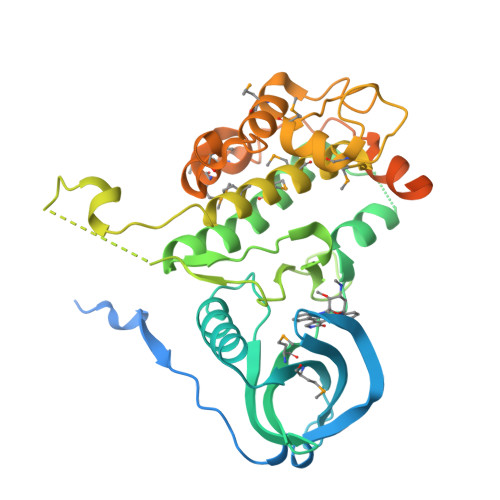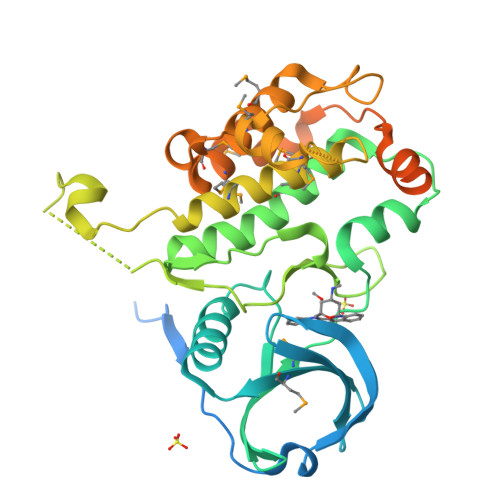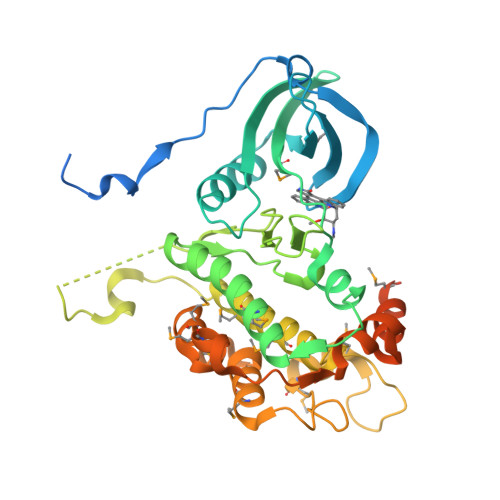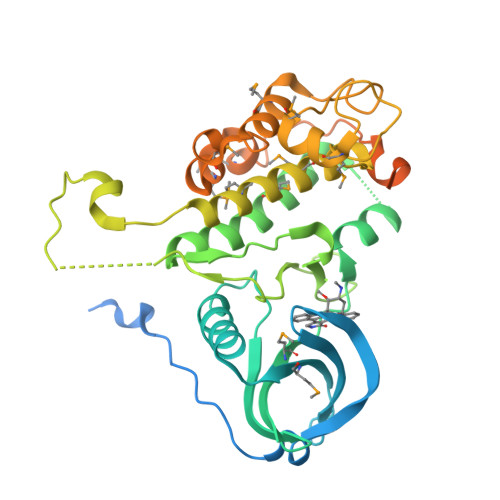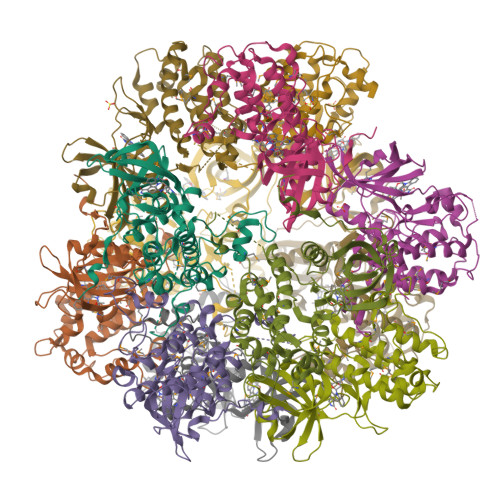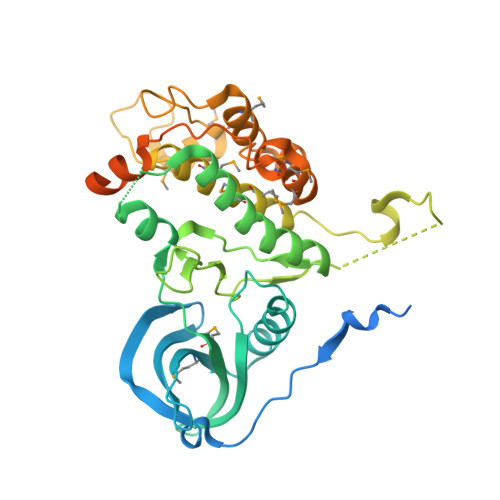Catalytically active MAP KAP kinase 2 structures in complex with staurosporine and ADP reveal differences with the autoinhibited enzyme
Underwood, K.W., Parris, K.D., Federico, E., Mosyak, L., Czerwinski, R.M., Shane, T., Taylor, M., Svenson, K., Liu, Y., Hsiao, C.L., Wolfrom, S., Maguire, M., Malakian, K., Telliez, J.B., Lin, L.L., Kriz, R.W., Seehra, J., Somers, W.S., Stahl, M.L.(2003) Structure 11: 627-636
- PubMed: 12791252
- DOI: https://doi.org/10.1016/s0969-2126(03)00092-3
- Primary Citation of Related Structures:
1NXK, 1NY3 - PubMed Abstract:
MAP KAP kinase 2 (MK2), a Ser/Thr kinase, plays a crucial role in the inflammatory process. We have determined the crystal structures of a catalytically active C-terminal deletion form of human MK2, residues 41-364, in complex with staurosporine at 2.7 A and with ADP at 3.2 A, revealing overall structural similarity with other Ser/Thr kinases. Kinetic analysis reveals that the K(m) for ATP is very similar for MK2 41-364 and p38-activated MK2 41-400. Conversely, the catalytic rate and binding for peptide substrate are dramatically reduced in MK2 41-364. However, phosphorylation of MK2 41-364 by p38 restores the V(max) and K(m) for peptide substrate to values comparable to those seen in p38-activated MK2 41-400, suggesting a mechanism for regulation of enzyme activity.
Organizational Affiliation:
Department of Biological Chemistry, Wyeth Research, 87 Cambridge Park Drive, Cambridge, MA 02140, USA. kunderwood@wyeth.com








